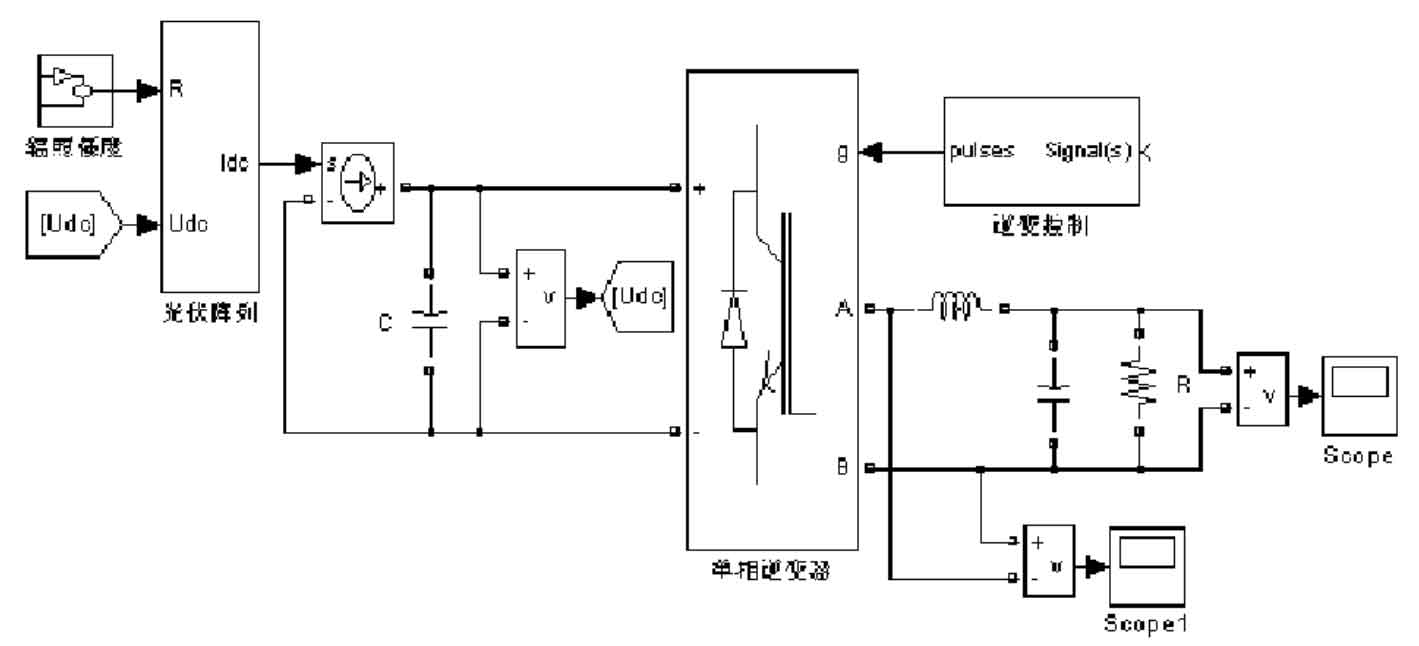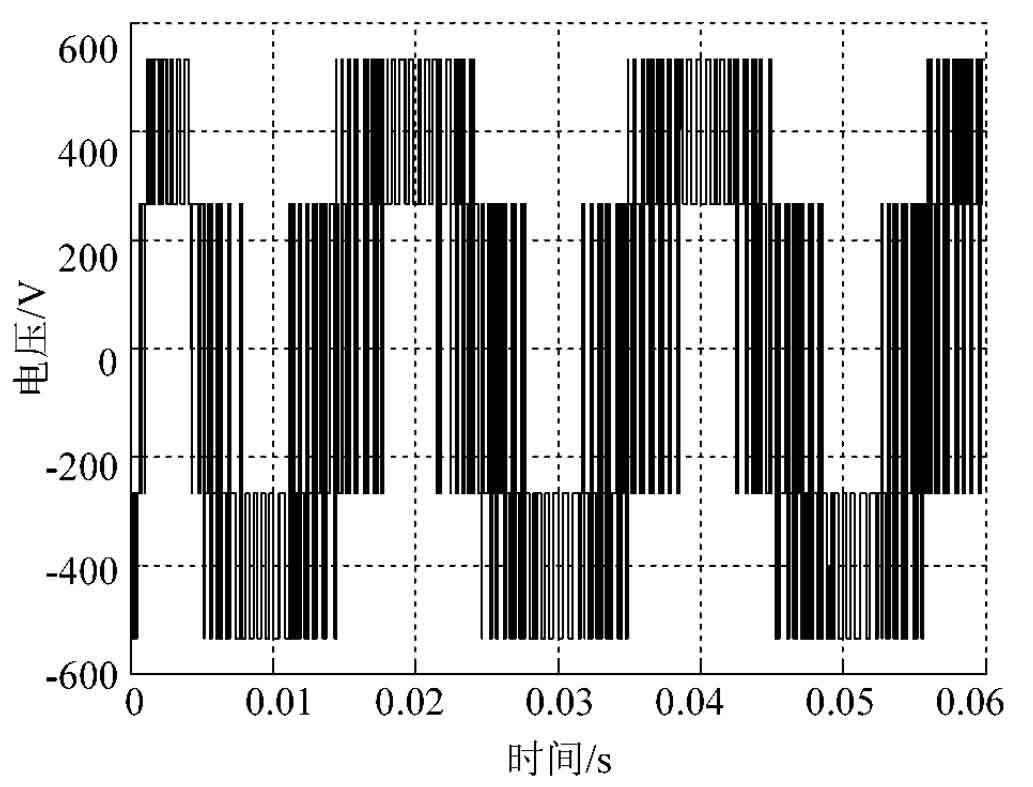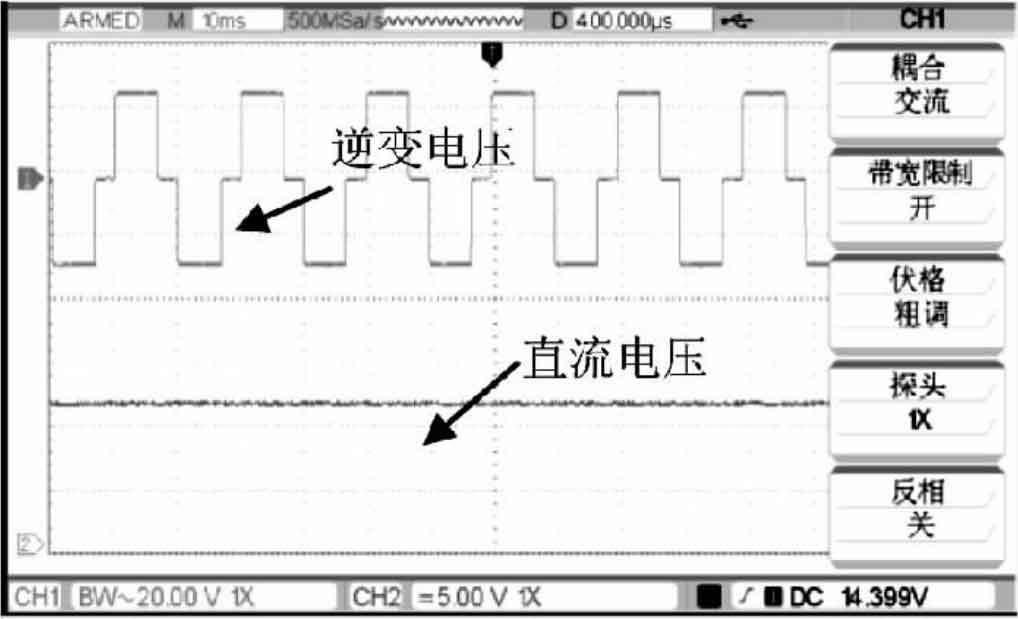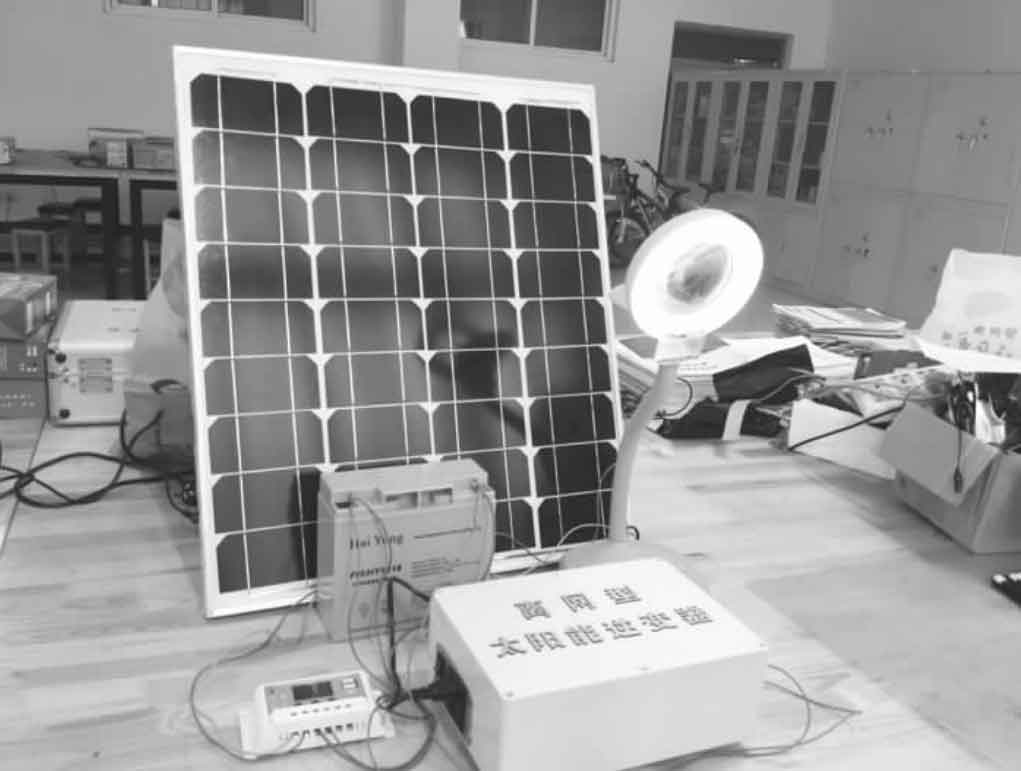Solar energy is a pollution-free, renewable, green and clean energy source. Currently, solar photovoltaic power generation has become a widely researched and applied method to solve the increasingly scarce energy demand in the world. A design scheme for a small solar photovoltaic single-phase inverter is proposed. A full bridge inverter simulation model is designed based on the simulation software MATLAB and simulation analysis is conducted. The working principle of the designed full bridge inverter circuit is theoretically explained. The SG3525 chip is used for SPWM modulation technology to achieve the conversion of 12V solar cell inverter to 220V/50Hz electric phase AC output, And developed a small photovoltaic single-phase inverter and conducted inverter experiments on it, providing experimental waveforms. Theoretical analysis and experimental results indicate that the design scheme of a small solar photovoltaic single-phase inverter proposed in this paper is feasible. The article is based on the national level college student innovation and entrepreneurship training program project “Discrete Solar Photovoltaic Inverter”, which involves theoretical knowledge from multiple courses and has certain practical significance in improving students’ practical ability to comprehensively apply professional knowledge.
1. Composition of solar photovoltaic power generation
Solar photovoltaic power generation is the process of directly converting solar radiation into electrical energy by utilizing the “photovoltaic effect” of semiconductor materials in photovoltaic modules. It has the advantages of no pollution, no noise, and easy maintenance. The composition of solar photovoltaic power generation generally includes solar cell modules, DC/AC inverters, battery packs, and AC/DC loads.
Solar panels are the main foundation of solar photovoltaic power generation. Currently, there are three types of solar panels: monocrystalline silicon, polycrystalline silicon, and amorphous silicon. Among them, monocrystalline silicon has high photoelectric conversion efficiency and long service life. Therefore, the system designed in this article uses monocrystalline silicon solar panels. Its open circuit voltage is 12V and short circuit current is 2.9A.
2. Photovoltaic inverter function
The designed inverter adopts typical two-stage conversion circuits of DC/DC conversion and DC/AC conversion. The 12V output voltage of the solar panel is transformed into a stable DC voltage of about 300V through high-frequency boosting of the DC/DC conversion circuit, and then inverted into an AC voltage with an effective value slightly higher than 220V through the DC/AC conversion circuit. After LC power frequency filtering, an AC voltage with an effective value of 220V and a frequency of 50Hz is obtained to supply power to the load.
The PWM control circuit chip SG3525 is a current type single-chip integrated PWM controller with excellent performance, complete functions, and strong universality. It is simple, reliable, and convenient to use. The output driver is in the form of push pull output, which increases the driving ability; It contains an undervoltage locking circuit, soft start control circuit, PWM latch, overcurrent protection function, adjustable frequency, and can limit the maximum duty cycle. Due to the fact that the output drive circuit of chip SG3525 adopts a push-pull circuit with low impedance, while the input impedance of MOSFET is very high, pins 11 and 14 of chip SG3525 directly drive the gate of power MOSFET IRFP150 to achieve DC/AC conversion single-phase output.
Pin 8 of chip G3525 is usually connected to a soft start capacitor. Due to the voltage at both ends of the capacitor not changing suddenly, during the power on process, pin 10 is kept at a high level to block the output pulse, making chip SG3525 unable to work. Only when the soft start capacitor is charged to make pin 8 at a high level can chip SG3525 start working.
The DC/AC conversion adopts a single-phase full bridge inverter circuit, and the output uses an LC filtering circuit. The full bridge inverter circuit is composed of four IRF740, and the driving signal is provided by SG3525.
3. Single-phase inverter and MATLAB simulation

Considering the influence of factors such as sunlight intensity and temperature, a solar photovoltaic single-phase power generation simulation model was constructed based on a series of mathematical models of photovoltaic arrays and relevant electrical models in the MATLAB simulation software electrical model library to analyze its actual operating characteristics. The simulation model is shown in Figure 1. The parameters of the solar photovoltaic single-phase power generation simulation model are set as follows: the ambient temperature is 24, the solar radiation intensity is 1000, the parameters of the output LC filter are L=7mH, C=2uF, the output voltage of the resistive load is 380V, the frequency is 50Hz, and the simulation time is 0.1 seconds. Figure 2 shows the PWM simulation waveform.

4. Experimental results

In order to verify the correctness of the circuit design for single-phase solar photovoltaic inverters mentioned above, a small prototype of photovoltaic single-phase inverters is developed. The prototype and testing platform are shown in Figure 3, which consists of a storage oscilloscope, an off grid solar inverter, and a 12V solar battery. Figure 4 shows the experimental waveform of the solar inverter output, where the DC voltage of the 12V solar battery is obtained by attenuating by one time the probe pen, and the voltage waveform output by the inverter is obtained by attenuating by 10 times the probe pen. From the voltage experimental waveform output in Figure 4, it can be seen that the experimental voltage waveform is basically consistent with the corresponding simulation results. Figure 5 shows the experiment of an off grid solar photovoltaic power generation system.


5. Conclusion
1) A single-phase solar photovoltaic inverter model was constructed based on MATLAB/SIMULINK and simulation analysis was conducted;
2) Using the SG3525 push-pull boost structure to directly drive MOSFETs for inverter, the feasibility of the designed single-phase solar photovoltaic inverter has been verified through experiments.
